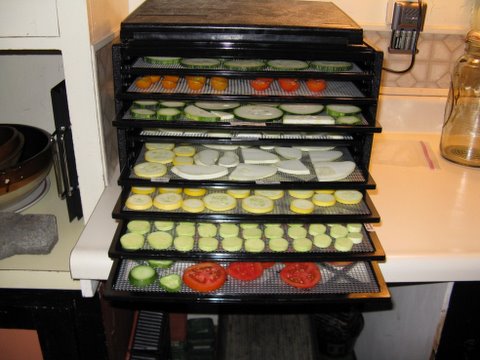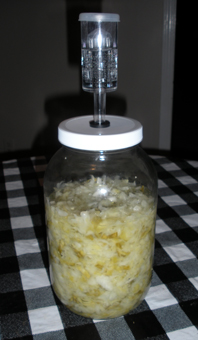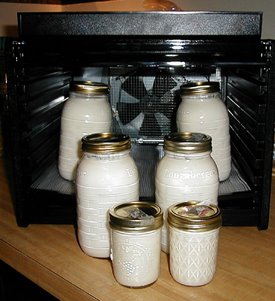I bought a dehydrator simply to make yogurt. Sure, I told myself at the time, I could dry berries and cherries and make healthy chips out of root vegetables. But the main driver was that I needed a reliable incubator for my yogurt and that was all. Sure, I’ve tried a few vegetable experiments, previously mentioned, and not worth mentioning further. So here’s the thing–my friend Sr. Catherine Grace is a dehydrating overachiever.
I bartered an Excalibur dehydrator for many lovingly cultivated vegetable seedlings and seeds. Instead of going to a retail nursery, I went to the Sisters where they know their plants and their plants know them. These seeds and seedlings are decendents of plants right from Bluestone Farm. There’s something very special about knowing who your plants’ parents and grandparents were. Anyway, back to Sr. Catherine Grace’s adventures with the dehydrator…
On Day 1:
The dehydrator arrived yesterday afternoon, and of course I whipped it into service. What a fabulous piece of equipment, and it’s going to get a huge amount of duty around here! So far I’ve finished drying some Borghese, cherry and Sun Gold tomatoes and the first Boldog peppers of the year!
It holds as much as both of the old dryers we were using, and best of all, I can set the timer and the temperature!!! No more guessing! The drying is even, the shelves are exactly the most useful distance from each other (no more tomatoes stuck almost permanently to the shelf above the one they started on), the screens are smaller so I can dry small stuff safely, and the three different surfaces are really, really useful. I can even tuck full dill heads into the basic shelf so the seeds dry more quickly, and they don’t get blown away by the fan!!
The square shelves make soooo much more sense; more food in less space, and so much easier to lay out.
The Excalibur people might want to consider using her in their next advertisement.
On Day 2:
Here is just one hour’s worth of work (if you can call slicing “work”), to load up the dehydrator! With room to spare, this is five large tomatoes, a load of Sun Gold and Borghese tomatoes (small ones), two huge pattypan squash, two yellow squash, three and a half green zucchini-like squash (one huge), and one long light green squash. Probably would have taken me about six hours to process all this into something I could freeze.

Are you Excalibur people getting all this?
On Day 3:
Today it’s more tomatoes and a lot of apple rings with cinnamon. I’ve decided to dry tomato slices rather than can or freeze them; no electricity to run them in the freezer all season, they maintain much more of their healthful goodies when dried rather than cooked, canned, and/or frozen, and this is much less dangerous than canning. (I’m really, really, really careful when canning low-acid food, but still …)
At the moment I’m finding everything is taking longer than even some of the long-end-of-the-range that’s in the book; probably because it’s still pretty humid. With the timer, though, who cares?!
I think dryers are a fabulous boon to the food preserving process. I especially like this one; it’s easy to use, really easy to clean, things dry evenly, and you can leave a shelf out if you’re drying something chubby or fluffy — or making yogurt. By the way, the yogurt leather (yogurt with strawberry jam) and the applesauce leather came out beautifully.
I really can’t thank you enough for this. I think the rest of the sisters believe I plan to be dried in there myself when my Great Transformation arrives.
Okay Excalibur, you could not get a better endorsement than that!
And I think I need to get slicing and drying…


